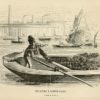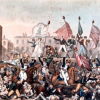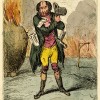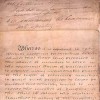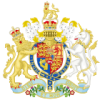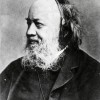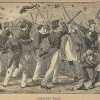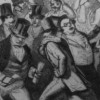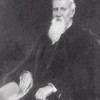The 99%
Created by Carrie Sickmann on Thu, 04/18/2024 - 11:19
Part of Group:
Timeline of Events Related to Class and Economics
Timeline
Chronological table
| Date | Event | Created by | Associated Places | |
|---|---|---|---|---|
London Labour and London Poor, three volumes published1861: Publishing house Griffin and Bohn reissued volume one of London Labour, and published a patched-together volumes two and three. Exact month of publication unknown; if you have information about the correct date, please email [email protected] with this The below image, captioned 'Thames Lightermen', is taken from the Griffin and Bohn volume 3 of London Labour, published in 1861. The image is in the public domain as its copyright has expired, and was digitised from the University of California libraries by Internet Archives.
|
David Rettenmaier | |||
| 16 Oct 1811 |
National Society for the Education of Poor Children foundedOn 16 October 1811, the National Society for the Education of Poor Children in the Principles of the Established Church (the Church of England) was founded to establish “National Schools.” According to their founders, poor children were to be taught to avoid vice and behave in an orderly manner within their station. To limit costs, the monitorial system was employed, by which more advanced pupils taught younger ones. Related ArticlesFlorence S. Boos, “The Education Act of 1870: Before and After” |
David Rettenmaier | ||
| 16 Aug 1819 |
Peterloo massacre
Related ArticlesJames Chandler, “On Peterloo, 16 August 1819″ Sean Grass, “On the Death of the Duke of Wellington, 14 September 1852″ |
David Rettenmaier | ||
| Apr 1825 |
Stock market crashOn April 1825, the British stock market began to crash. After the speculative bubble reached its peak, falling Bank of England gold reserves and a collapse in stock prices lead to panic by the end of the year. Related ArticlesAngela Esterhammer, “1824: Improvisation, Speculation, and Identity-Construction” |
David Rettenmaier | ||
| Dec 1825 |
Bank failures in London
ArticlesAlexander J. Dick, “On the Financial Crisis, 1825-26″ Related ArticlesAngela Esterhammer, “1824: Improvisation, Speculation, and Identity-Construction” Lana L. Dalley, “On Martineau’s Illustrations of Political Economy, 1832-34″ |
David Rettenmaier | ||
| Aug 1830 to Dec 1830 |
Swing Riots
Related ArticlesCarolyn Lesjak, "1750 to the Present: Acts of Enclosure and Their Afterlife" (forthcoming) |
David Rettenmaier | ||
| 30 Oct 1831 |
Riots at BristolOn 30 October 30 1831, a crowd of 10,000 took possession of Queen Square in Bristol, as rioting in nine cities and towns marked the failure of the second version of the First Reform Bill in the House of Lords. Related Articles |
David Rettenmaier | ||
| Jun 1832 |
Reform Act
ArticlesCarolyn Vellenga Berman, “On the Reform Act of 1832″ Related Articles |
David Rettenmaier | ||
| 29 Aug 1833 |
Factory Act
ArticlesRelated Articles |
David Rettenmaier | ||
| Jul 1842 |
Sanitary Condition of the Labouring Population
Related ArticlesPamela Gilbert, "On Cholera in Nineteenth-Century England" Barbara Leckie, “‘The Bitter Cry of Outcast London’ (1883): Print Exposé and Print Reprise” |
David Rettenmaier | ||
| 8 Aug 1842 |
Manchester strike
ArticlesChris R. Vanden Bossche, "On Chartism" Related ArticlesJo Briggs, “1848 and 1851: A Reconsideration of the Historical Narrative” |
David Rettenmaier | ||
| 31 Aug 1848 |
Public Health Act
ArticlesPamela Gilbert, "On Cholera in Nineteenth-Century England" Barbara Leckie, “‘The Bitter Cry of Outcast London’ (1883): Print Exposé and Print Reprise” |
David Rettenmaier | ||
| 24 Aug 1857 |
Start of 1857 financial crisis in the US
ArticlesLynn Shakinovsky, “The 1857 Financial Crisis and the Suspension of the 1844 Bank Act” Related ArticlesCrosby, Mark. “The Bank Restriction Act (1797) and Banknote Forgery” |
David Rettenmaier | ||
| 27 Oct 1857 |
Start of the 1857 financial crisis in England
ArticlesLynn Shakinovsky, “The 1857 Financial Crisis and the Suspension of the 1844 Bank Act” Related ArticlesCrosby, Mark. “The Bank Restriction Act (1797) and Banknote Forgery” |
David Rettenmaier | ||
| 24 Dec 1857 |
End of the 1857 financial crisis in England
ArticlesLynn Shakinovsky, “The 1857 Financial Crisis and the Suspension of the 1844 Bank Act” Related ArticlesCrosby, Mark. “The Bank Restriction Act (1797) and Banknote Forgery” |
David Rettenmaier | ||
| 11 May 1866 |
Black FridayThe Collapse of the City of London's oldest bill-brokerage firm and discount company, Overend, Gurney, and Company initiates the financial panic of 1866, marking a change in perception of the banking industry and stimulating new economic theories during the 1860s. Articles |
David Rettenmaier | ||
| 15 Aug 1867 |
Second Reform Act
ArticlesJanice Carlisle, "On the Second Reform Act, 1867" Related ArticlesCarolyn Vellenga Berman, “On the Reform Act of 1832″ Elaine Hadley, “On Opinion Politics and the Ballot Act of 1872″ |
David Rettenmaier | ||
| 26 Jul 1869 |
Poor Rate Assessment and Collection Act
Articles |
David Rettenmaier | ||
| 9 Aug 1870 |
Education Act of 1870
ArticlesFlorence S. Boos, “The Education Act of 1870: Before and After” |
David Rettenmaier | ||
| Sep 1873 |
Financial panic of 1873 begins
Related Articles |
David Rettenmaier | ||
| Jul 1888 |
London Matchgirls' StrikeIn July 1888, the London Matchgirls' Strike occurred. Related ArticlesHeidi Kaufman, “1800-1900: Inside and Outside the Nineteenth-Century East End” |
David Rettenmaier | ||
| 14 Jan 1893 |
Independent Labour Party foundedBetween 14 January 1893 and 16 January 1893, the Independent Labour Party was founded. After three candidates who had campaigned as labor representatives were elected to parliament in 1892, the Independent Labour Party held its first conference and issued a platform calling for collective ownership, free public education, unemployment relief, and a minimum wage. The ILP would later join a broader coalition, the Labour Representation Committee formed at a conference held 26-27 February 1900, and on 15 February 1906 the name Labour Party was adopted. ArticlesFlorence Boos, “The Socialist League, founded 30 December 1884″ |
David Rettenmaier |

